This is the Viltrox 28mm f/4.5 Pancake Lens, it is soon to be launched on Indigogo, but I’ve been playing with the copy I have here for the last week or so. I am, I admit, a little biased – I love a pancake snapshot lens, and this lens makes for no exception to that rule. It’s not perfect, but it has design I like, it is autofocus and is about as pancake as they come, and definitely inspires a snapshot shooting style.
In case you aren’t fully versed in what I am talking about here, pancake lenses are lenses that are very low profile, and snapshot lenses are lenses that have various features that allow them to be used with less thought than more conventional lenses. It might be that they are wide angle so can be set at a hyperfocal distance and stopped down slightly so can be used without need to refocus for each shot. Of course this can be done with any wide angle lens, but snapshot lenses also tend to have other features like slower maximum apertures, fixed apertures or click stops at certain focus distances for easy hyperfocal setting. One way or another they tend to be of more simple design and are in some way or another limited in their functionality or range of usefulness. This is why I often lump pancake lenses into the concept of snapshot lenses. For one, because pancake lenses are so low profile, they tend to be quite fiddly to use – this can lead to a snapshot style of shooting. A lot of snapshot lenses are themselves pancake lenses too.
I’ve shot a few pancake and snapshot type lenses over the years. The first was probably the Voigtlander 25mm f/4 snapshot-skopar. Not a lens that everyone loves, but with its focus click stops, I rate it for how easy it is to use. Then there’s the various pancake manual SLR lenses including Nikon’s 45mm 2.8 GM Auto and later ‘P’ version, the former I still own. The Pentax-M 40mm is a lens that gets talked down a lot too, but again I rated it for its size more than anything else – especially on the tiny Pentax MX. I also currently own and shoot the Contax 45mm 2.8; a lens that for a long time felt like the holy grail of Pancake lenses to me. I have also reviewed a couple of Funleader 18mm lenses – they have slightly less than perfect optics, but make for great photos with a bit of post processing. All of these lenses are manual though. The only other AF pancake I’ve shot is the Pentax 40mm DA XS that originally came with the K-01. Despite being designed for APS-C cameras, it actually covers full frame and is definitely the lowest profile pancake lens I’ve shot. I’ve even brought my own to market in the form of the Omnar CN26-6, a fixed aperture manual focus 26mm f/6 lens for Leica M-mount that’s tiny and very much designed around snapshot photography. In short, and as mentioned, I’m a fan of both Pancake and snapshot lenses. I couldn’t live without more conventional lenses, but I really enjoy a small, lightweight, low profile lens, and if it can be shot without too much thought in a point and shoot/snapshot style, even better. Which, as I have said, is why I am likely biased toward the idea of liking the Viltrox 28mm f/4.5.
 Trying to out my bias aside though, I do think lenses like this have a lot going for them. Limitations within photography – at least I would argue – are often of greater benefit than the opposite on the psyche of the photographer. Of course it’s very easy to make strong arguments for modern super-high resolution, high shooting speed, fast autofocus, extreme lowlight performance cameras that will also make you toast and drive you to work in the morning. They make photography easier and faster with lower fail rates. More features, higher spec, etc cameras take away limitations and allow the photographer to take better photos in more extreme conditions. But gear that’s stripped back, more basic, simpler to use with less features and options can have an equally positive impact. They free the photographers mind from options and allow a different type of positive experience to be had. I probably don’t need to be saying this on a website that heavily features film cameras and older more simple gear… But thats exactly what the Viltrox 28mm f/4.5 lens does, and it does it for cameras that are otherwise overly complex. In short, I believe a lens like this can bring a few limitations to shooting modern mirrorless cameras which in turn can make those sorts of cameras feel differently enjoyable to use. That’s my theory at least – what remains to be asked is how specifically good the Viltrox 28mm f/4.5 is at offering that simple, stripped back experience, and how good a photo can it take?
Trying to out my bias aside though, I do think lenses like this have a lot going for them. Limitations within photography – at least I would argue – are often of greater benefit than the opposite on the psyche of the photographer. Of course it’s very easy to make strong arguments for modern super-high resolution, high shooting speed, fast autofocus, extreme lowlight performance cameras that will also make you toast and drive you to work in the morning. They make photography easier and faster with lower fail rates. More features, higher spec, etc cameras take away limitations and allow the photographer to take better photos in more extreme conditions. But gear that’s stripped back, more basic, simpler to use with less features and options can have an equally positive impact. They free the photographers mind from options and allow a different type of positive experience to be had. I probably don’t need to be saying this on a website that heavily features film cameras and older more simple gear… But thats exactly what the Viltrox 28mm f/4.5 lens does, and it does it for cameras that are otherwise overly complex. In short, I believe a lens like this can bring a few limitations to shooting modern mirrorless cameras which in turn can make those sorts of cameras feel differently enjoyable to use. That’s my theory at least – what remains to be asked is how specifically good the Viltrox 28mm f/4.5 is at offering that simple, stripped back experience, and how good a photo can it take?
Build and Use
The Viltrox 28mm f/4.5 is a pancake snapshot style lens. It’s very low profile, only sticking out from the camera by about 15mm. It’s around 60g too so very light weight. It is designed for full frame, so at 28mm, it is a wide angle lens. It also has a fixed f/4.5 aperture – that is to say, it can only be shot at f/4.5. It also doesn’t have a focus ring, and so only works in autofocus.
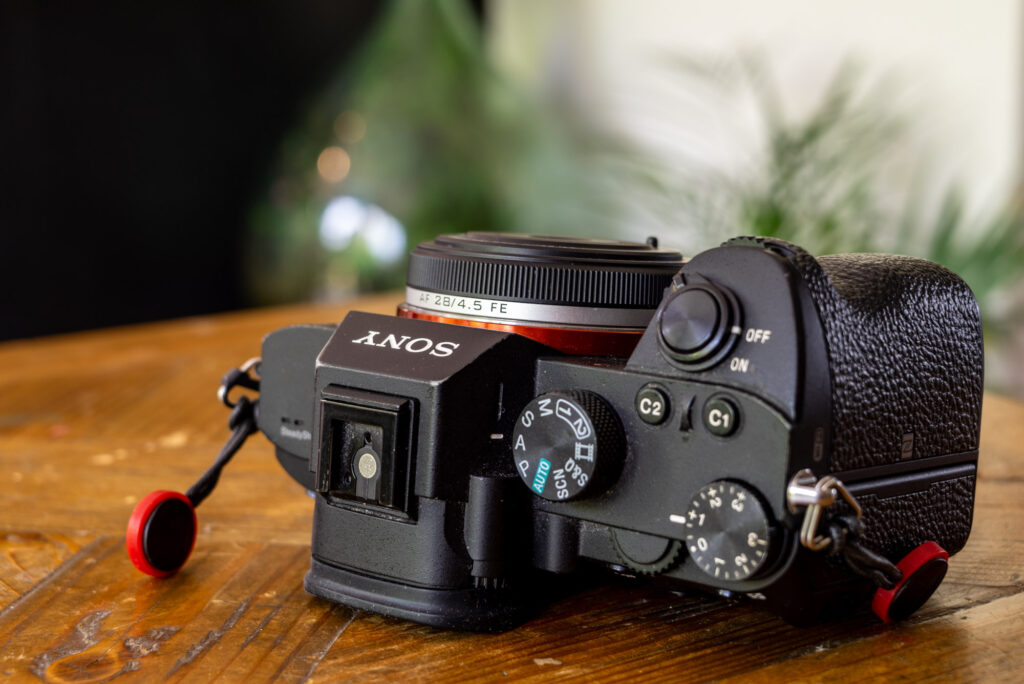
The body of the lens is made of plastic (as most modern lenses are), but it feels pretty good quality with it. It has a metal lens mount that looks to be of decent quality and has a USB port which I think is safe to assume is for firmware updates. It has a built in lens cap that’s operated with a sliding switch on the front of the lens. It has no filter thread and no lens hood.
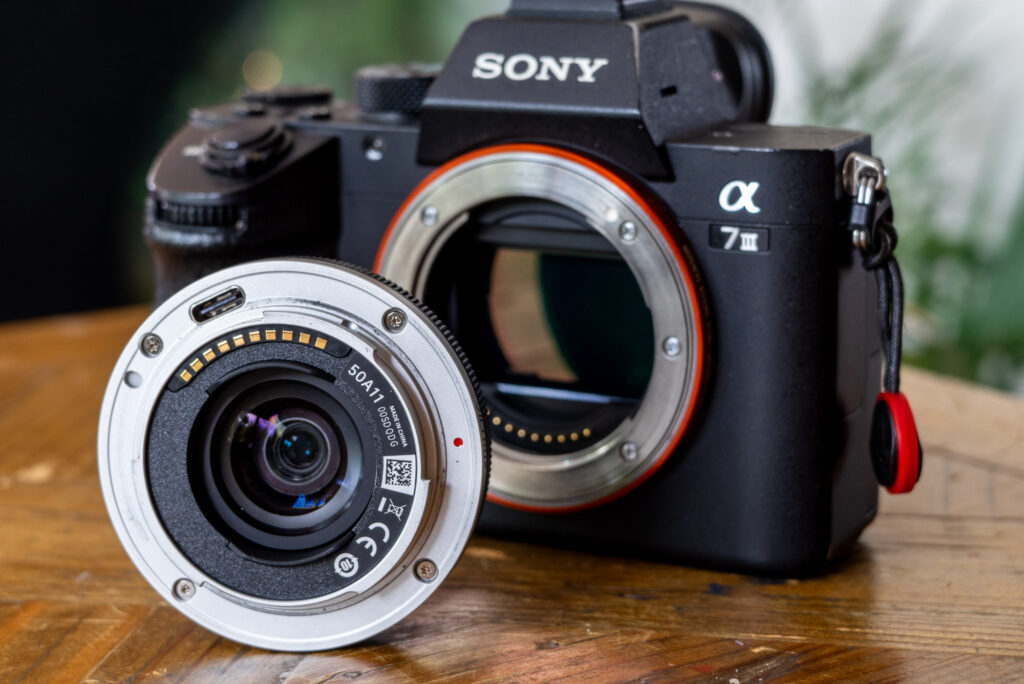
The fixed iris is sat in front of the lens elements which is pretty unusual, and as mentioned provides an f/4.5 aperture. Interestingly – since the iris doesn’t change size – they still opted for an octagonal shape. As I will come to, this makes for some pretty strong sun stars. I suspect this was intentional.
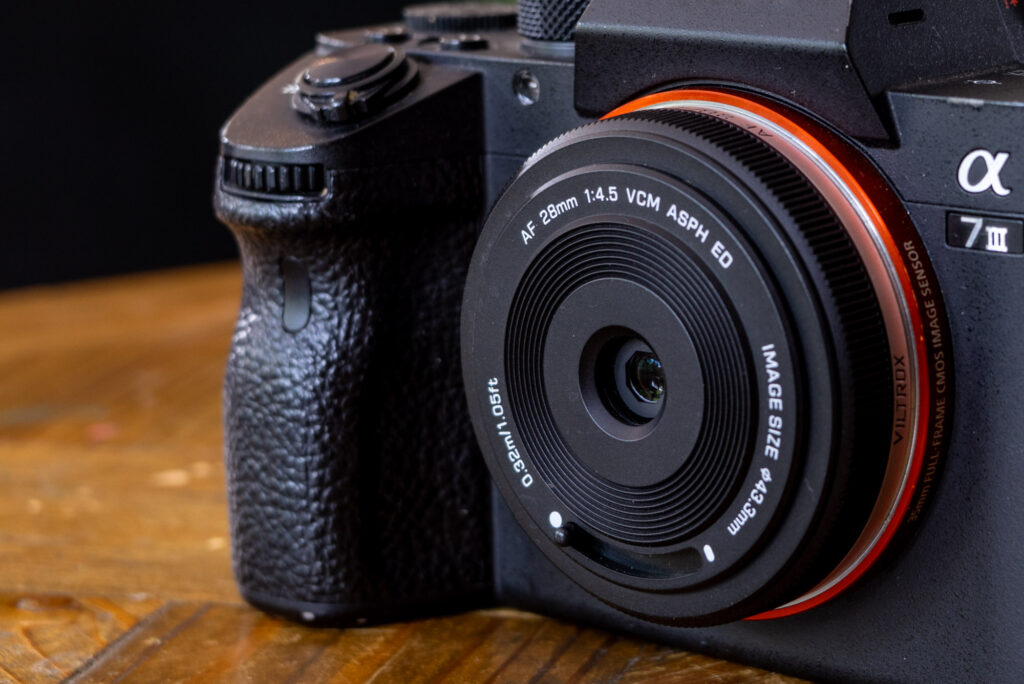
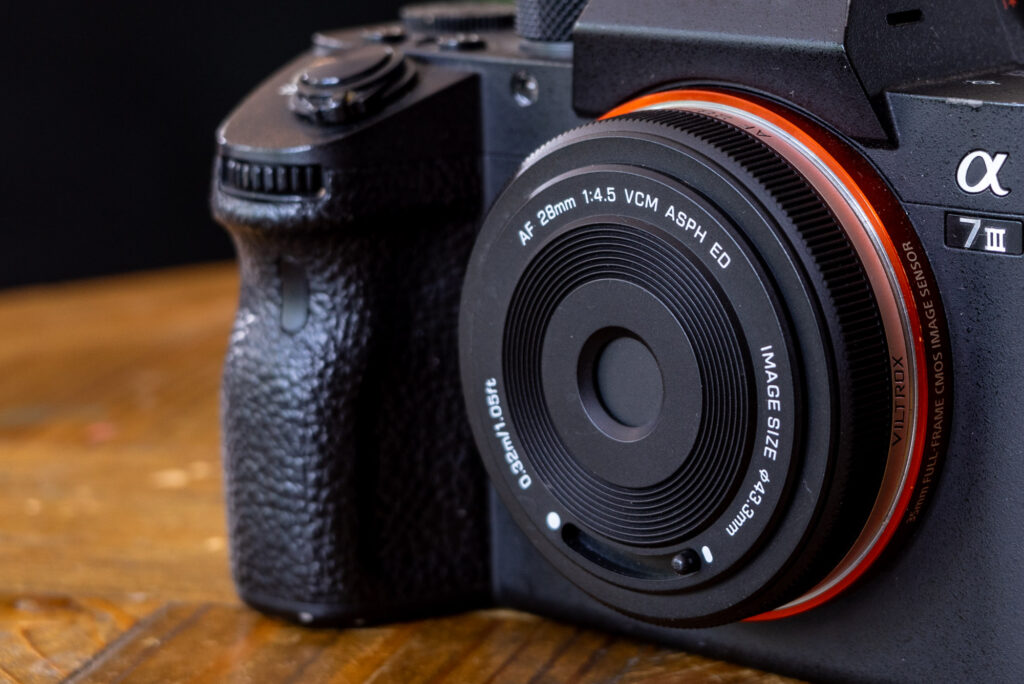
In use it feels very small indeed. I’m back to shooting a Sony A7iii and find this lens to look and feel very small on the camera. It projects from the camera less than the hand grip does. I had anticipated this making the camera feel uncomfortable or unbalanced, but it doesn’t. It feels quite nice to shoot in fact.
The autofocus performance isn’t particularly incredible, though I suspect some of that is down to the fact that I likely have a preproduction lens here. The USB port suggests it can and will likely be updated too, so I haven’t let it bother me. In fact, I haven’t really found it to be a problem with how I’ve been shooting it. It’s not lightning fast and sometimes hunts a little – more so at closer distances for some reason – but this is really only when held up against other expensive modern lenses. And as I say, I’d guess it will be updated. The only real limitation I’ve come across is the 32cm close focus – for some reason I keep expecting it to be able to focus closer. It just somehow feels like it should.
I have also had a couple of weird issues with it. The first is that if you turn the camera on with the lens cap shut, after you open it, the AF doesn’t work. For it to work you need to open the lens then turn the camera on. Once’s on you can open and close the lens fine. I suspect this could be fixed with a firmware update. I’ve also found that it just doesn’t work at all on my old Sony NEX-5 – again probably a firmware fix, though slightly annoying. When the lens is mounted the NEX-5 won’t even turn on. These little niggles aside, it’s otherwise been well behaved – I guess that’s not a surprise though really, not that much else to the lens to go wrong.
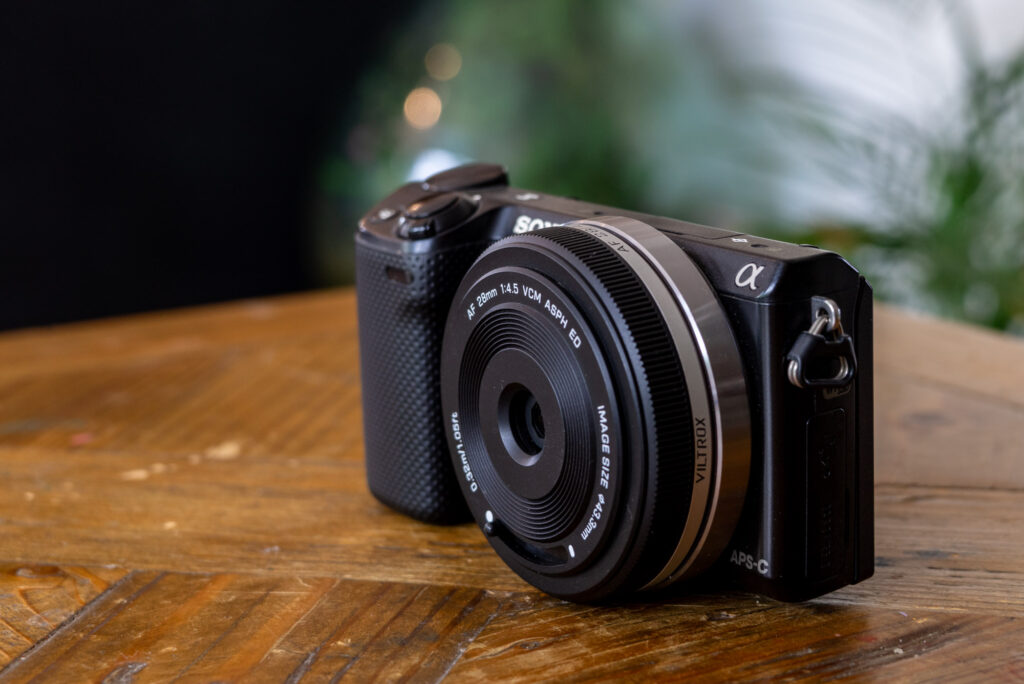
APS-C shooting
Before I move onto the optics, I also want to mention why I bothered trying it in my NEX-5 at all. The short answer is a persistent enjoyment I find in small camera/lens combinations that give me a roughly 40-50mm equivalent field -of-view. Being a 28mm lens, mount on an APS-C camera, it gives something close to 43mm equivalent. Just as interesting is the effective ~f/7 aperture. This confused a couple of people last time I mentioned the effect of crop factor on aperture. I know there’s no difference in the amount of light the lens lets through, what I am talking about is depth of field. This is one of the advantages of smaller sensor/film cameras. You get broader depth of field with the same light gathering power of wider apertures. As such, with a 28mm f/4.5 lens, when a 1.55x crop factor is applied, it gives a lens with an equivalent of 43mm field of view, f/4.5 light gathering and f/7 depth of field. Or in other words, a snapshot lens with a normal field of view and nice and broad depth of field for day time shooting. Anyone who has read about my ongoing experiences and enjoyment of the Pentax Q7 and little 8.5mm f/1.7 (40mm f/7.9 equivalent) will be aware of this preference.
In summary, I’ve enjoyed shooting this lens cropped just as much as I have full frame, though thanks to it not working on my NEX-5, I’ve been putting the Sony A7iii into crop mode. This obviously reduces the overall megapixel resolution from 24 to around 10mp, but this is meaningless in my hobby photography – especially for snapshot photography. It’s also meant not having the overall size advantage of a smaller camera. But has brought the advantage of being able to switch between full frame and cropped which has almost made it feel like two snapshot lenses in one. For reference, I have noted how each shot was taken as part of the caption on the sample images.
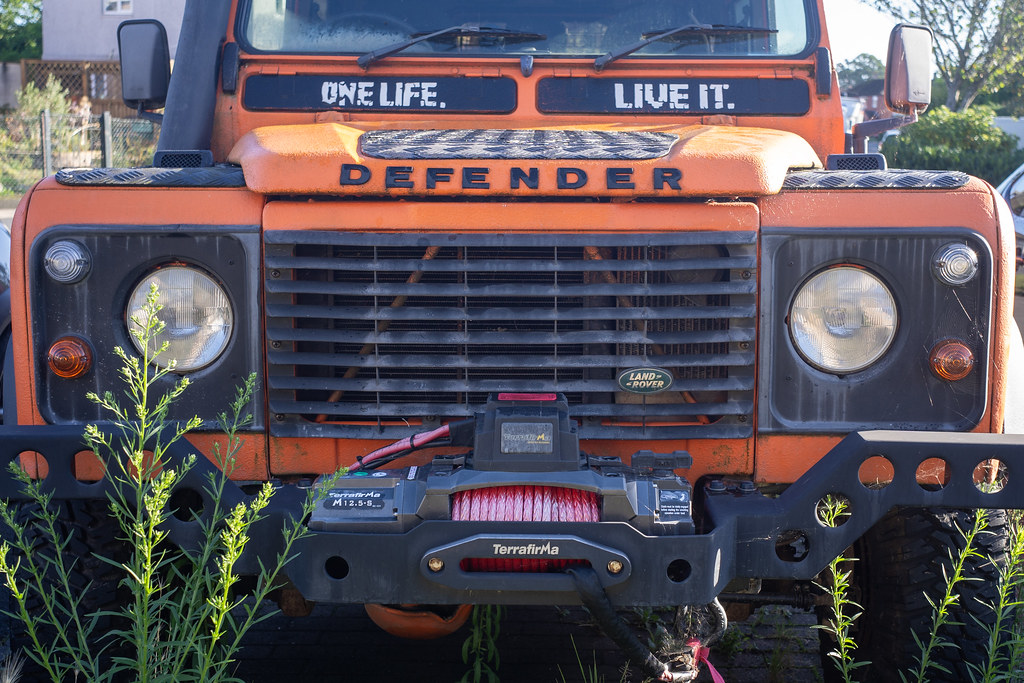
Optics
I came at this lens with low expectations for optical quality. For one, my contact in China who supplied it to me said that it is “…slightly less impressive compared to professional lenses”. This felt like a wooly way of telling me it was going to be a bit crap. As mentioned, this isn’t the only modern Sony mount pancake lens I’ve tried. The other is the Funleader 18mm. Now, I should say that I really like the Funleader 18mm lenses, but the issue with them is that they are just a little lacking in optical quality. I really like them for what they are, but I’ve always felt their usage is limited to when I want to shoot high contrast black and white photos. The unprocessed colour images out of camera just aren’t quite good enough. I’d expected to find similar results from the Viltrox 28mm f/4.5. I wasn’t entirely correct.
I will start this by saying it is a good optic, but it’s definitely not up to professional lens standards. Still wooly right…? This time though, I’m basing that comment on a mental process I went through. I had a job where I very nearly picked it up, but instead chose my Sony 28-60. The 28-60 is actually slightly faster at f/4 at the wide end, but that wasn’t why I chose it. I chose it because it’s a much more conventionally good lens that I know I can trust to take decent photos given pretty much any usual daylight shooting applications. With my professional hat on, that’s more often than not what I need from a lens. Of course the 28-60 is a very slow lens, so it’s not universally useful, but it does work very well for me where and when its specifications aren’t a limitation and its size is an advantage.
The specifications and size of the Viltrox 28mm f/4.5 wouldn’t have been an issue given the job in question, but the optics would. The only way I could make use of the Viltrox for my professional work is if I was specifically looking for a certain look to my images. That is to say, the Viltrox 28mm f/4.5 is not a perfect optic, and is instead what I would put into the box of character lens. In fact, its character isn’t that dissimilar from the Funleader, it’s just a bit better and a bit more conventionally useful.
Vailing flare
As with the Funleader, the Viltrox 28mm f/4.5 is let down by lower contrast results in some shooting situations. For the Funleader, it’s pretty much all situations. With the Viltrox, it’s all about the angle of light. It would really would benefit from a hood, but there’s no way of attaching one.
Shot directly into the light sometimes it can be fine. But even shooting subjects that are entirely in the shade, if there’s a source of light in roughly the same direction that the lens is pointing it can suffer from veiling flare. This fence provides a good example of this. The sunlight was shining through trees above the fence and must have been slightly catching the lens even though it wasn’t in frame. To get rid of the veiling flare I had to shield the lens with my hand.
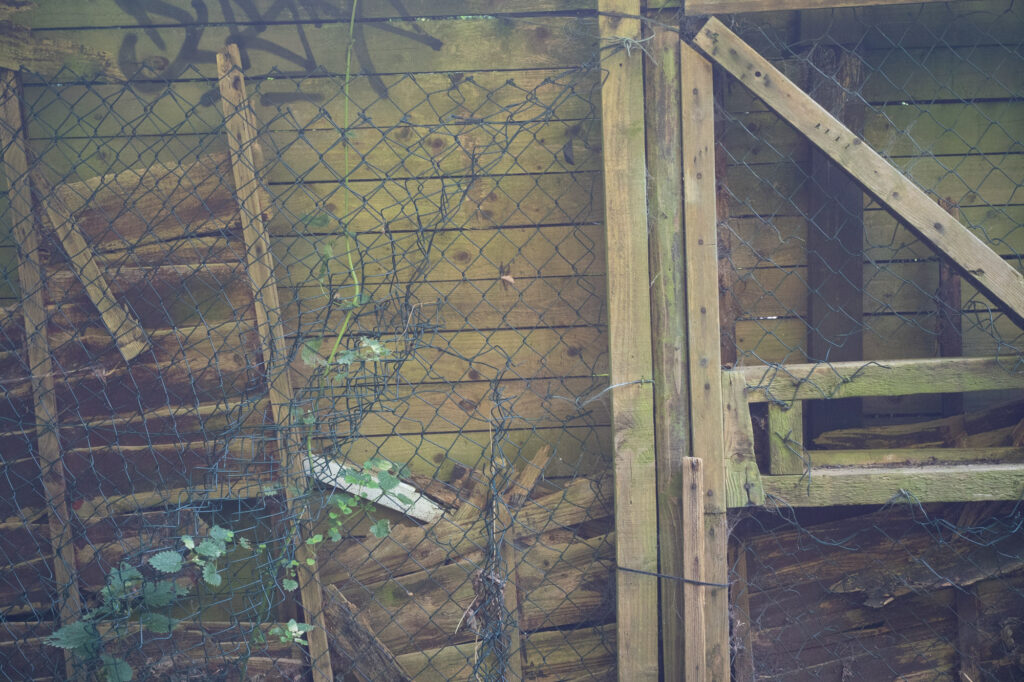
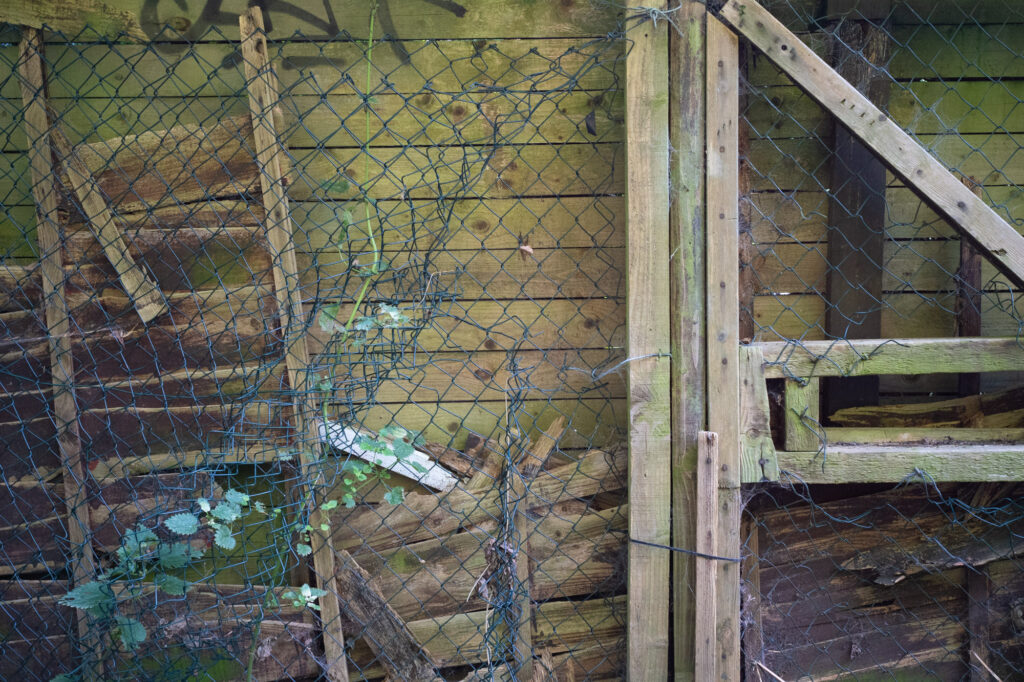
Here’s another couple of examples where shooting into the light has caused some veiling flare

 And one where I managed to get the lens to veil with some rainbow ghosting too
And one where I managed to get the lens to veil with some rainbow ghosting too

But then, as you can see with this example, given the right angle of light, results can be really quite contrasty.
 And then of course there is the opportunity to take advantage for the effect of the flare like this (which I quite like; YMMV):
And then of course there is the opportunity to take advantage for the effect of the flare like this (which I quite like; YMMV):
 I mentioned it not being great for pro use, but actually I could easily see this sort of effect working well shooting models for a fashion shoot maybe etc. that’s just not my game at all… so I don’t have any samples…
I mentioned it not being great for pro use, but actually I could easily see this sort of effect working well shooting models for a fashion shoot maybe etc. that’s just not my game at all… so I don’t have any samples…
Sharpness
It’s also quite a sharp lens. Of course there’s no comparing different apertures here. To my eye though, it’s pretty impressive. I’m sure the pixel-peepers might have something to say about corners falling off – it’s certainly not as sharp and a little smeary in the extreme corners – but for my money, it’s a nice and sharp lens. Click on this image through to flickr and zoom in on the left corners, if you would like to see.
 Sun stars
Sun stars
I’m not one to write about sun stars all that often in my reviews, but it strikes me that this lens was designed to achieve them. As mentioned, the iris (if it can still be called that) provides a fixed aperture of f/4.5. It can’t and doesn’t change size. Yet despite this, it still has it an octagonal shape. The only reason I can think they did this is to allow the lens to produce sun stars, and produce them it definitely does. I like this – I don’t seek them out in my photography, but I like the fact that this has been thought about in the lens design for those who do. Since the lens sometimes seems to be happy being shot directly into the sun, you can achieve pretty dramatic results too.

 Bokeh
Bokeh
Of course, bokeh isn’t really something that needs much mention with a lens like the Viltrox 28mm f/4.5, but given the unusual iris and how I have been shooting it in both full frame and cropped modes, I thought it worth a mention. Highlights are of course pretty small even at closest focus distances, but the overall look of the bokeh is slightly busy, though not unatractive when shot as a full frame lens.
 When shot on a crop sensor, it’s a little more visible when shooting at closer distances. You can just about make out the octagonal shape too, but you have to looking pretty closely.
When shot on a crop sensor, it’s a little more visible when shooting at closer distances. You can just about make out the octagonal shape too, but you have to looking pretty closely.

Vignetting
As you might expect, there’s some vignetting. With the iris in front of the lens, I might have expected more, but it’s not too obvious. In crop mode, of course there’s no visible vignetting.
 Distortion
Distortion
I can see any meaningful distortion in my real life results – perhaps a hint of barrel distortion, but nothing that I would expect to get in the way of the sort of shots I could see being taken with a lens like this.
 Overall thoughts on lens character
Overall thoughts on lens character
As you can probably see, the Viltrox 28mm f/4.5 is somewhat – though not entirely – defined by the way it deals with light sources. Vailing flare and corresponding reductions in contrast can – if you don’t like that sort of thing – blight your images. On the other hand, it is possible to shield the lens to help the issue sometimes, and actually it’s an effect that some might favour for certain types of work. Add the fact that the lens is sharp, and the rest of its character traits make for what most would consider conventionally good optics and you have a lens that has some character, but can – with some caveats – also be used as a daily snapshot lens. I think my bias remains here – I just can’t help be a little more forgiving of a lens that’s as small as this one. Your mileage may vary, of course, but I would and have been more than happy taking this lens out by itself.
More Photos
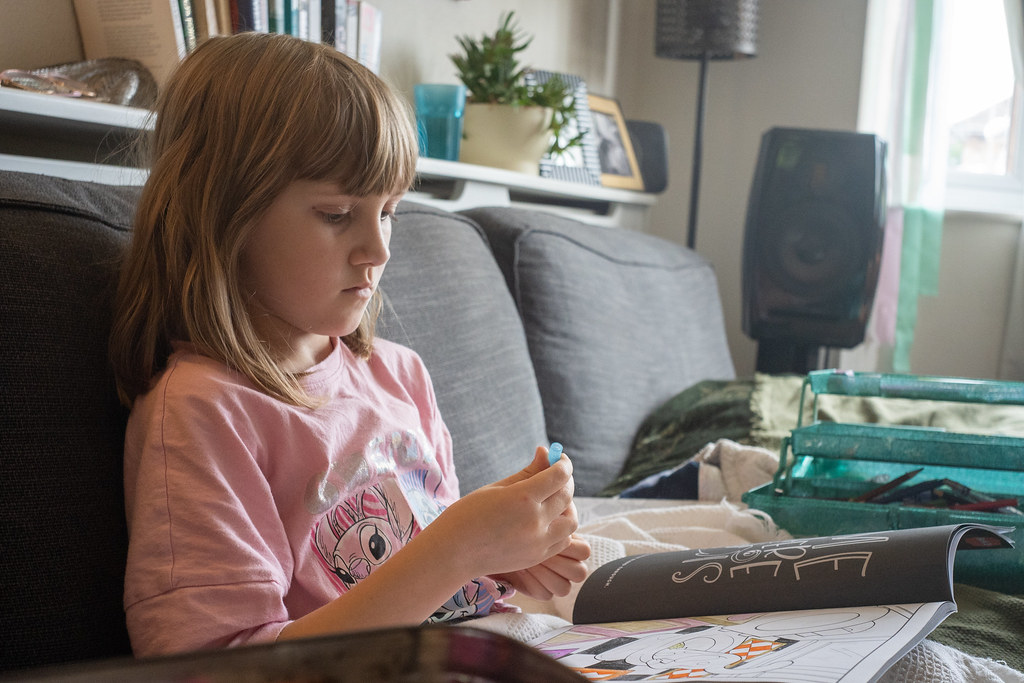
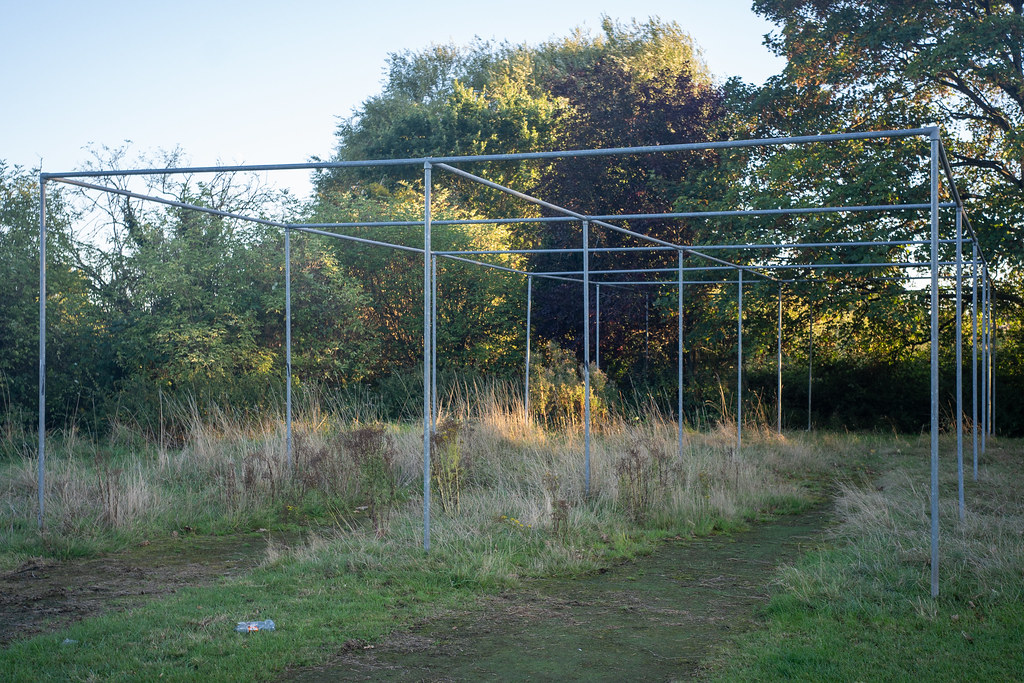
Final Thoughts
The Viltrox 28mm f/4.5 is a lens that’s designed to be compact and limited in functions and features leaving the photographer with the only option to shoot it with little thought. It’s the sort of lens I might carry alongside a faster longer prime such as my Samyang 75mm 1.8 for a compact everyday carry type set up. It’s also the sort of lens I might carry by itself when I want to just point & shoot without much thought or consideration. It fits the bill of pancake and snapshot lens perfectly.
As I’ve outlined, it’s optically imperfect to a degree that I have found it difficult to trust for professional work where I just need to be able to shoot without thinking about the impact of lens characteristic traits. But, the extent that the flare impacts images is manageable enough, and indeed interesting enough for me to shoot comfortably for my hobby where I’m either not so worried about flare, or maybe even seeking it out as a creative tool.
As I said at the beginning, I am a little biased through the fact that I really enjoy pancake and snapshot lenses for the way that they encourage me to shoot. I find them to be freeing through how they encourage me to work without having to think too much about what I’m doing. Despite my bias though, I do think think the Viltrox 28mm f/4.5 is a nice lens for what it is. It’s also a bit of a bargain at the price, too! I now look forward to seeing what firmware updates bring to its capability… and wish Viltrox success with their campaign.
You will find the lens on Indigogo from the 29th here – it’s already pretty affordable, but with the discounts on there, it’s a bargain frankly!
Also maybe worth noting, Viltrox are currently running a photography competition – more details here
Share this post:
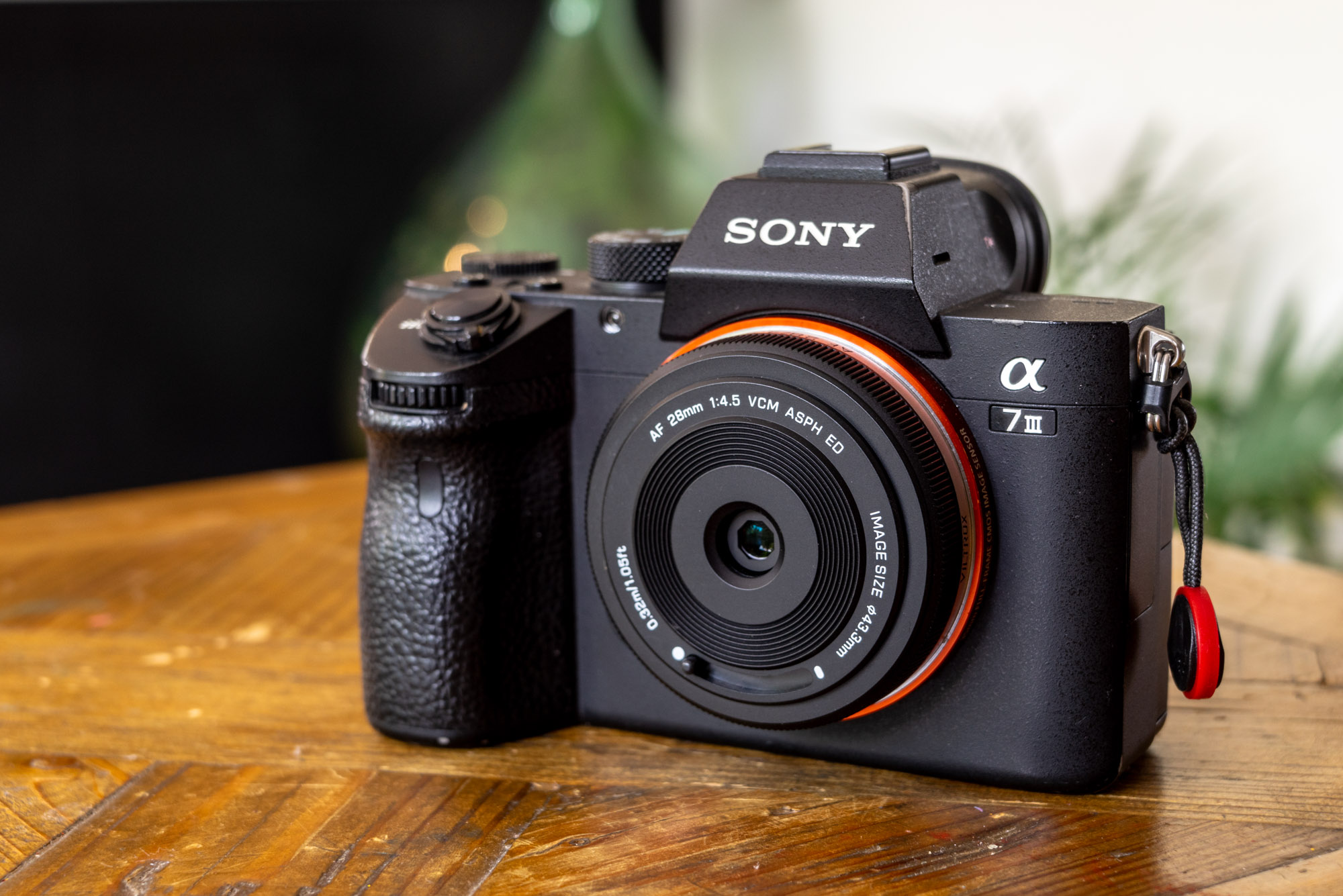





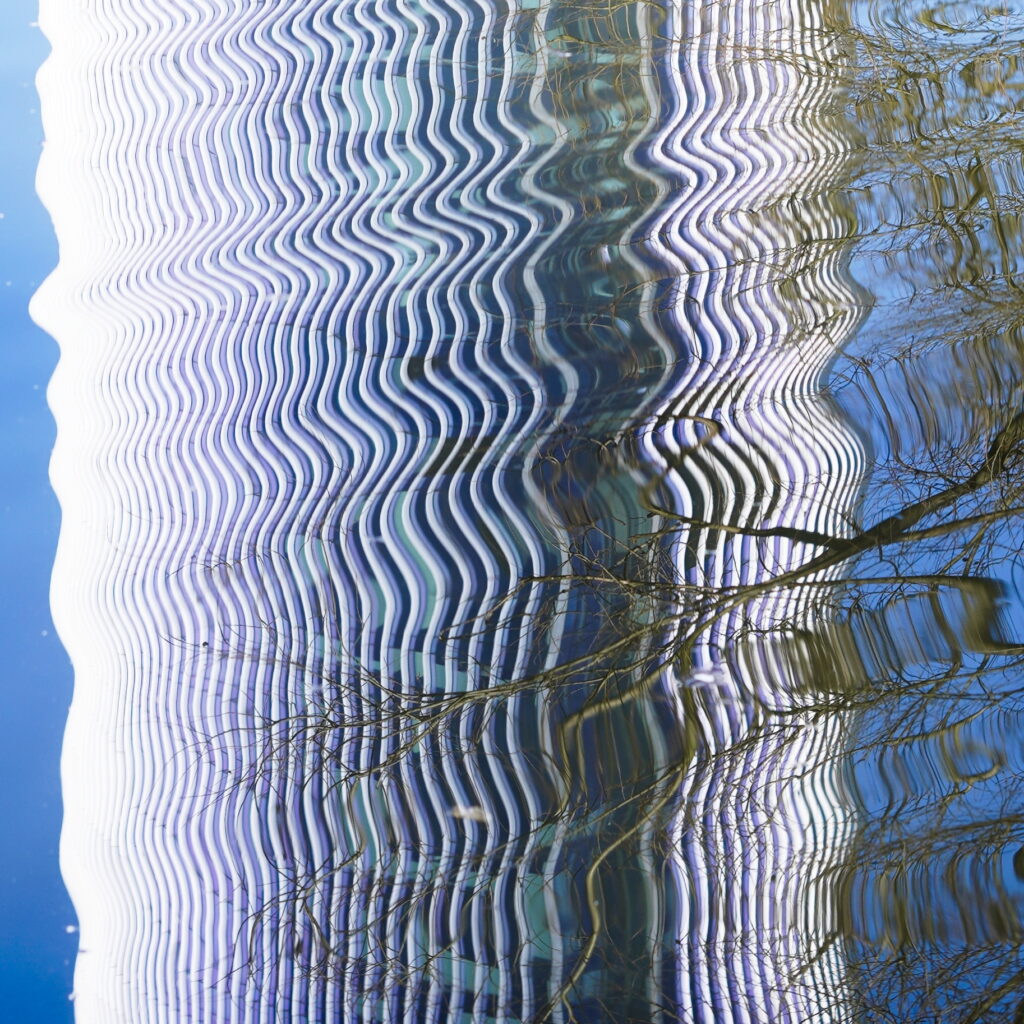
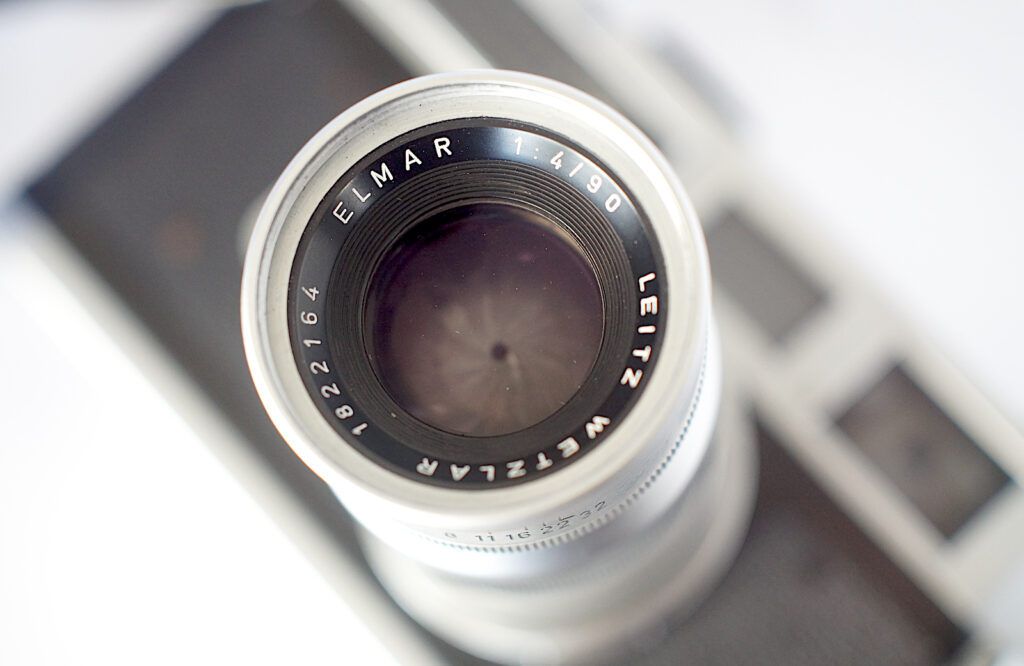
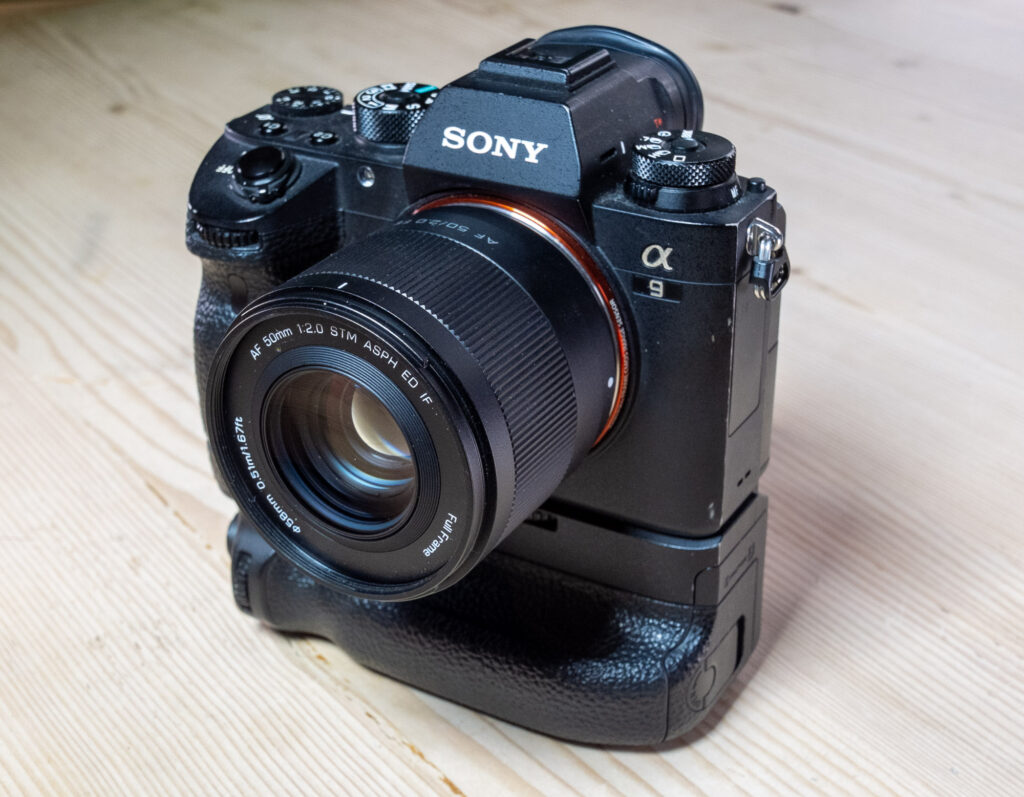
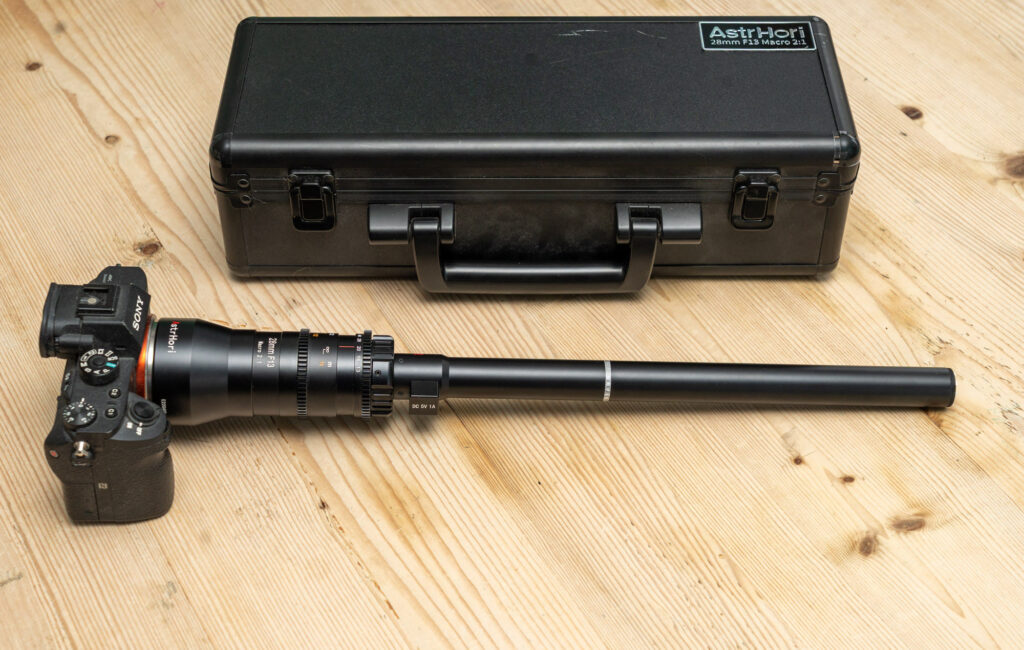




Comments
Sebastian Shields on Viltrox 28mm f/4.5 Pancake Lens Review and Indigogo Launch
Comment posted: 27/09/2024
Comment posted: 27/09/2024
Max Tiraquon on Viltrox 28mm f/4.5 Pancake Lens Review and Indigogo Launch
Comment posted: 27/09/2024
Comment posted: 27/09/2024
Comment posted: 27/09/2024
Gary Smith on Viltrox 28mm f/4.5 Pancake Lens Review and Indigogo Launch
Comment posted: 28/09/2024
Torsten Kathke on Viltrox 28mm f/4.5 Pancake Lens Review and Indigogo Launch
Comment posted: 29/09/2024